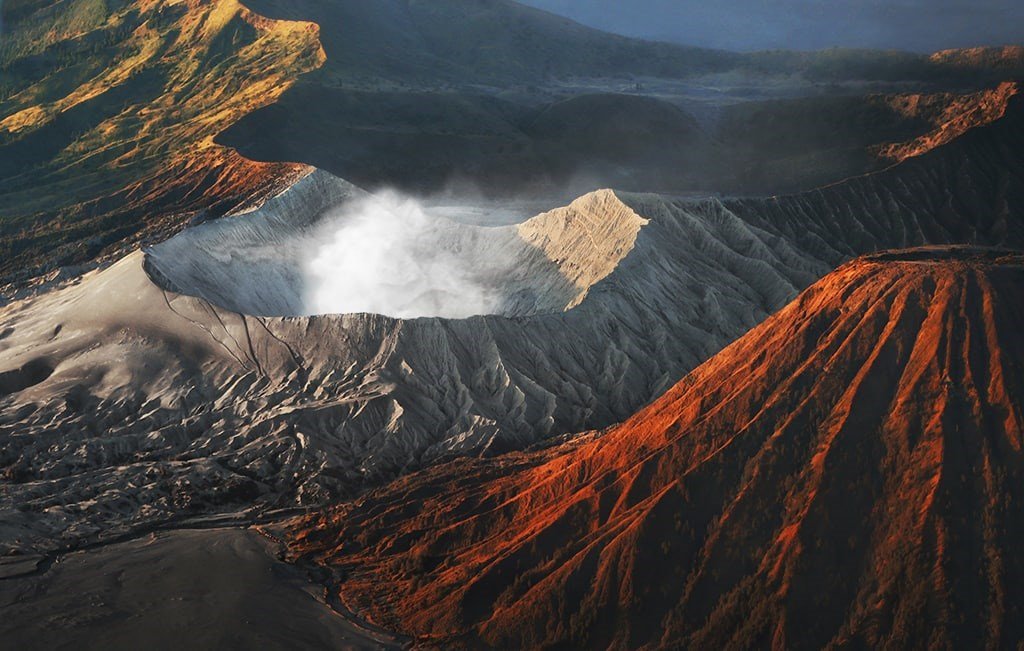Mount Fuji, Japan: The Deadly Beauty of Japan’s Iconic Peak
Standing tall at 3,776 meters (12,389 feet), Mount Fuji is the highest peak in Japan and one of the most iconic and revered mountains in the world. Its snow-capped summit, symmetrical cone, and stunning presence have made it a symbol of Japan’s natural beauty, culture, and spiritual significance. However, beneath its picturesque exterior lies a complex and dangerous geological force that has the potential to cause destruction. Despite being an awe-inspiring natural landmark, Mount Fuji’s beauty is interwoven with its history of volcanic activity and potential future eruptions.
In this article, we will explore Mount Fuji’s history, its volcanic activity, the dangers it poses, and the significance it holds in Japanese culture and spirituality.
The Beauty and Majesty of Mount Fuji
Mount Fuji has captivated people for centuries, with its perfect conical shape and picturesque appearance making it one of the most photographed mountains in the world. It is often featured in art, literature, and folklore, symbolizing both the grandeur of Japan’s landscape and the transience of life.
The mountain is situated on the island of Honshu, just west of Tokyo, making it a prominent feature in the Kanto region. Its proximity to Japan’s most populous cities makes it a popular destination for hikers, climbers, and tourists. Many people from around the world come to see its beauty firsthand, especially during the summer months when the hiking season is in full swing.
The five lakes surrounding the base of the mountain—Kawaguchi, Yamanaka, Sai, Motosu, and Shoji—offer stunning views and are perfect for photography. In the winter, the mountain’s snow-capped peak contrasts with the blue skies, providing a breathtaking scene. During spring, cherry blossoms bloom in the surrounding areas, further enhancing Mount Fuji’s reputation as one of the world’s most beautiful natural landmarks.
Mount Fuji’s Volcanic Nature
Despite its beauty, Mount Fuji is an active volcano that has erupted several times in the past. It is part of the Ring of Fire, a geologically active zone where tectonic plates converge, resulting in frequent seismic activity and volcanic eruptions.
Mount Fuji’s last eruption occurred in 1707, known as the Hōei eruption, which lasted for several weeks and produced a significant amount of ash, affecting the surrounding areas, including Edo (modern-day Tokyo). The eruption also resulted in the creation of a new crater on the summit of the mountain, adding to its dangerous nature. The eruption was large enough to impact daily life, with ash falling over hundreds of kilometers.
Since the Hōei eruption, Mount Fuji has remained dormant, but it is still classified as an active volcano. Experts believe that another eruption is possible, as the mountain’s geological activity has not ceased entirely. Although the risk of an eruption occurring in the near future is relatively low, it remains a constant reminder that Mount Fuji’s beauty can quickly be overshadowed by its destructive potential.
The Dangers of Climbing Mount Fuji
Every year, thousands of tourists and climbers attempt to ascend Mount Fuji, attracted by its majestic beauty and the sense of accomplishment that comes with reaching the summit. The mountain is accessible for climbers from July to September, during the official climbing season, when conditions are less severe and the weather is milder. However, even during this period, climbing the mountain is not without its risks.
- Altitude Sickness: One of the most significant dangers when climbing Mount Fuji is altitude sickness, which can occur due to the sudden change in elevation. Symptoms include nausea, dizziness, headaches, and shortness of breath. The peak of Mount Fuji is 3,776 meters above sea level, and many climbers, especially those who ascend quickly without acclimatizing, can experience these symptoms. This is why it is recommended to take breaks, stay hydrated, and gradually ascend to higher elevations to avoid the onset of altitude sickness.
- Harsh Weather Conditions: Even during the summer months, Mount Fuji’s weather can be unpredictable and harsh. The temperature at the summit can dip below freezing, and the wind can be very strong. Thunderstorms, heavy rain, and fog are common occurrences, making visibility difficult and the path treacherous. Climbers need to be prepared for changing conditions and bring proper gear, including warm clothing, sturdy footwear, and a reliable headlamp.
- Fatigue and Overexertion: The climb up Mount Fuji can be physically demanding, particularly for inexperienced hikers. The ascent is long and strenuous, and the thin air at high altitudes can quickly drain energy levels. Many climbers underestimate the difficulty of the climb, leading to exhaustion and an increased risk of accidents. Adequate physical preparation and pacing oneself are essential to completing the climb safely.
- Volcanic Activity: As an active volcano, Mount Fuji poses the potential risk of a sudden eruption. While the likelihood of such an event during the climbing season is very low, the possibility of seismic activity should not be disregarded. It’s essential to be aware of any volcanic warnings issued by local authorities before and during the hike.
- Crowded Trails: Mount Fuji is one of the most popular climbing destinations in Japan, and during peak season, the trails can become crowded. This increases the risk of accidents and delays, as climbers are forced to navigate through congested areas. It’s important to be mindful of other climbers and avoid pushing oneself beyond physical limits, especially in crowded conditions.
Mount Fuji in Japanese Culture and Spirituality
In addition to being a stunning natural wonder, Mount Fuji holds profound significance in Japanese culture and spirituality. It has long been regarded as a sacred mountain and a symbol of purity and perfection. The mountain’s symmetrical shape is seen as a representation of balance and harmony in the natural world.
Throughout history, Mount Fuji has been the subject of numerous works of art, literature, and religious practice. It is considered a place of pilgrimage, and many Shinto shrines and Buddhist temples dot the slopes of the mountain. Pilgrims have historically ascended the mountain as part of spiritual rituals, and today, some still make the climb as a form of devotion.
The Fujisan Hongū Sengen Taisha Shrine, located at the base of the mountain, is a prominent site dedicated to the deity Konohanasakuya-hime, the goddess of Mount Fuji and the protector of those who climb it. It is believed that offering prayers at the shrine before attempting to climb the mountain brings safety and good fortune.
Additionally, Mount Fuji has been the subject of traditional Japanese art, most notably in the famous woodblock prints of Hokusai and Hiroshige. These iconic images have cemented Mount Fuji’s place in the global consciousness as a symbol of beauty and tranquility.
Conclusion
Mount Fuji is undoubtedly one of the most iconic and breathtaking natural landmarks in the world. Its beauty is undeniable, and its cultural significance is deeply rooted in the traditions of Japan. However, beneath its stunning facade lies the reality of its active volcanic nature and the potential dangers it poses. Climbers must approach the mountain with respect, preparation, and caution, as its beauty is tempered by the risks associated with hiking and its status as an active volcano.
Whether viewed from the plains of Tokyo or from the summit itself, Mount Fuji is a symbol of both nature’s grandeur and its power. It stands as a reminder that even the most serene and beautiful landscapes can harbor hidden dangers beneath the surface, making it a fascinating yet deadly beauty.


